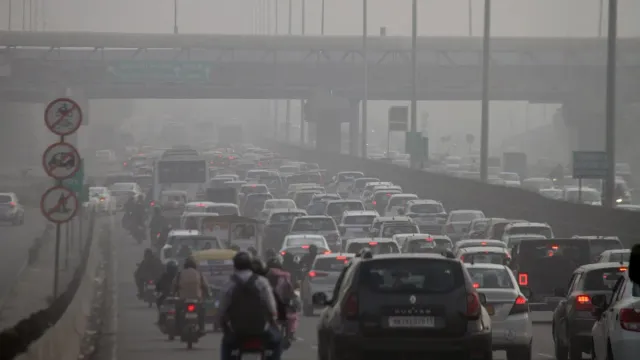- By Deeksha Gour
- Fri, 15 Nov 2024 01:09 PM (IST)
- Source:JND
Delhi AQI Today: Delhi and its neighbouring regions, including Noida, Ghaziabad and Gurugram, continued to experience heavy smog for the third consecutive day on Friday. This comes as the Graded Response Action Plan (GRAP) Stage III anti-pollution measures were implemented in response to the alarming air quality levels, which have reached 'severe' status in many areas.
As of the latest updates, the Air Quality Index (AQI) in several parts of Delhi ranged from 800 to 1100, categorised as 'hazardous.' According to the Swiss air quality technology firm IQAir, Anand Vihar recorded the highest AQI at 1105, followed by Dwarka-Sector 8 at 1057 and Vasant Vihar Block C at 1041. IQAir compiles its AQI data from a global network of government monitoring stations and its own sensors.
Meanwhile, the Sameer app, which provides hourly updates from the Central Pollution Control Board (CPCB), reported an overall AQI of 413 for Delhi around the same time. Most areas were classified within the 'severe' category, with AQI levels fluctuating between 401 and 500.
Delhi Pollution: Areas Most Affected by Poor Air Quality
As per IQAir's data collected around 11 AM on Friday, the ten areas in Delhi with the worst AQI readings were:
Anand Vihar (DPCC) - 1105
VV Block C Station (DPCC) - 1057
Dwarka-Sector 8 (DPCC) - 1041
Burari Crossing (IMD) - 967
Mundka (DPCC) - 945
Rohini (DPCC) - 836
Narela (DPCC) - 808
DTU (CPCB) - 766
ITO (CPCB) - 749
Najafgarh (DPCC) - 613
ALSO READ: Delhi 'Sasta Ghar' Housing Scheme: Over 2,600 Affordable Flats Now Available Under Phase 2; Details
Understanding the Variations in AQI Readings
It is important to note that AQI readings can vary between different reporting platforms. IQAir provides quicker updates using real-time data, whereas the CPCB offers a single daily reading that applies to the entire region. This means that IQAir's figures are likely to fluctuate more frequently, reflecting hourly changes in air quality.

